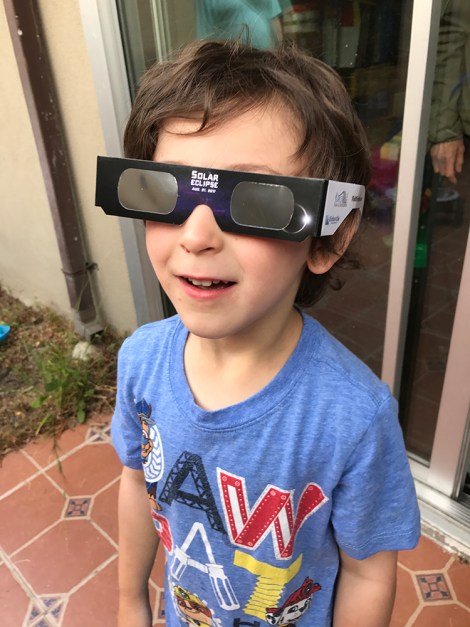SCIENCE
It’s not too late to build a solar eclipse viewer!
Teachers, scroll down for a quick list of key resources in our Teachers Toolkit.

Discussion Ideas

- The first misconception Dr. Shepherd writes about is the configuration of the map above. Just because you’re not in the “path of totality” doesn’t mean you can’t experience the solar eclipse. What is “totality”?
- Totality describes the period during an eclipse when light from the eclipsed body (in this case, the sun) is completely blocked.
- Take a look at the video above. Are you in the path of totality? If not, what sort of “partial eclipse” will you experience? From what direction will the moon start to block the sun? Check out this great resource from Time and Date for some help.
- “Regardless of where you are in the lower 48 United States, you WILL see at least a partial eclipse.“ Customize our 1-page maps to help make your own eclipse path!
- Here in Washington, DC, we’ll see our eclipse maximum at about 2:42 p.m., and the Moon will block the southern part of the Sun.
- My hometown of Salinas, California, will experience its eclipse at about 10:16 a.m., and the Moon will block the northwestern quadrant of the Sun.
- Our friend Julie in Lake Winnipesaukee, New Hampshire, will experience her eclipse at about 2:45 p.m., and the Moon will block the southwestern quadrant of the Sun.
- Our friend Jason in Skagway, Alaska, will experience his eclipse at 9:20 a.m., and the Moon will block the southeastern quadrant of the Sun.
- Our friend Daniel in Honolulu, Hawaii, will experience his eclipse at 6:35 a.m., and the Moon will block less than half the Sun from the northwest.
- “Regardless of where you are in the lower 48 United States, you WILL see at least a partial eclipse.“ Customize our 1-page maps to help make your own eclipse path!

- The second misconception Dr. Shepherd debunks is the idea that eclipses like this happen all the time. Solar eclipses do happen pretty frequently, so what makes this one special?
- This is an American eclipse! Take a look at the map above, which tracks the paths of all solar eclipses from 2001 to 2020. “As you can see, there has been no total eclipse in the United States during that time period except the upcoming event. The year 1979 was the last time a total solar eclipse was visible from any part of the contiguous United States, but the path of totality could really only be viewed from Canada and northwestern states.”
- The next total solar eclipse over North America will be April 8, 2024. The path of totality for that eclipse will follow a south-to-north route, starting on the Pacific coast of Sinaloa, Mexico, and ending in the Canadian Maritimes.
- The third misconception Dr. Shepherd debunks has to do with cloud cover during the eclipse. He assures us that “[e]ven if it is cloudy and you are near the eclipse path, something odd and cool will happen during the middle of the day.” If clouds block our view of the eclipse, why will we still experience something “odd and cool”?
- The Sun is awesome. Every day, it provides light and heat in the form of solar energy.
- As the Moon briefly eclipses the Sun, the ambient outdoor light will dim considerably. In the path of totality, bright morning light will shift to what seems like midnight!
- As the Moon briefly eclipses the Sun, the ambient temperature will drop dramatically. During a 2001 solar eclipse in Zambia, the temperature dropped nearly 15° F!
- Is the solar power industry prepared for the dramatic loss (and return) of solar energy? Yes.
- The Sun is awesome. Every day, it provides light and heat in the form of solar energy.

- Finally, Dr. Shepherd reminds us, in no uncertain terms: DO NOT LOOK AT THE SUN DIRECTLY. So, how can you safely view the solar eclipse?
- Build a pinhole camera! We have a great activity here, and NASA gives you another way to option here. It’s a great project, it’s affordable, it works, it’s safe, and if it’s good enough for NASA, it’s good enough for us.
- Get your hands on sanctioned eclipse-viewing glasses. Our astronomer, Jay Pasachoff, recommends these filters from the American Astronomical Society.
TEACHERS TOOLKIT
Forbes: Four Emerging Misconceptions On Social Media About The Upcoming Great American Eclipse
NASA: Eclipse 2017
Nat Geo: What is an eclipse? (reference)
Nat Geo: Build a Solar Eclipse Viewer (activity)
Nat Geo: Getting Ready for the Eclipse (blog)
Nat Geo: This Week in Geographic History: Solar Eclipse (resource collection)
NASA: 2017 Total Solar Eclipse’s Path Across the U.S.
Time and Date: Find Solar & Lunar Eclipses in Your City
Great American Eclipse: Future Eclipses in the 21st Century
Nat Geo: See the Solar Eclipse (study guide)


2 thoughts on “Four Reasons Why the Eclipse is Even More Awesome Than You Think”